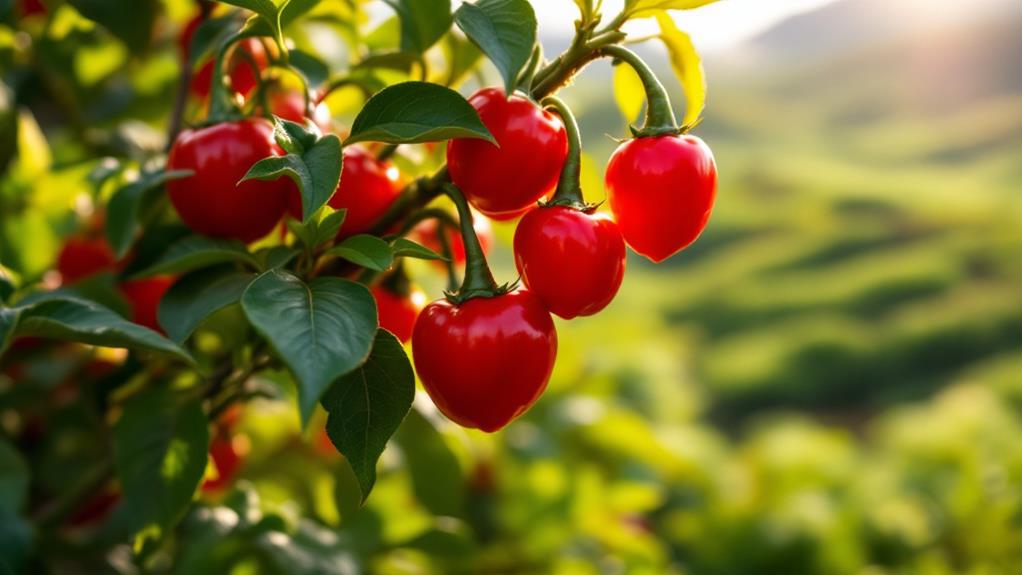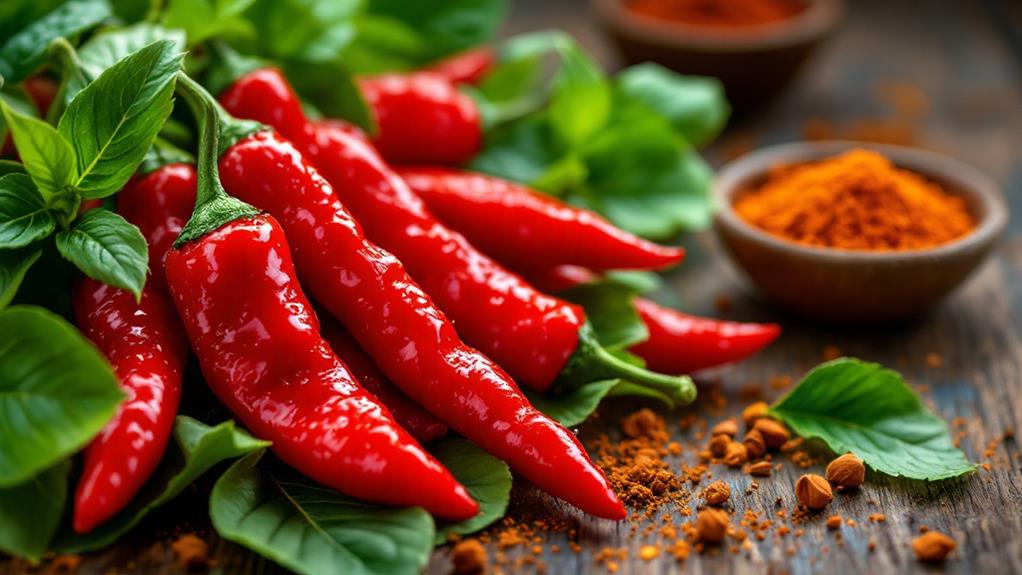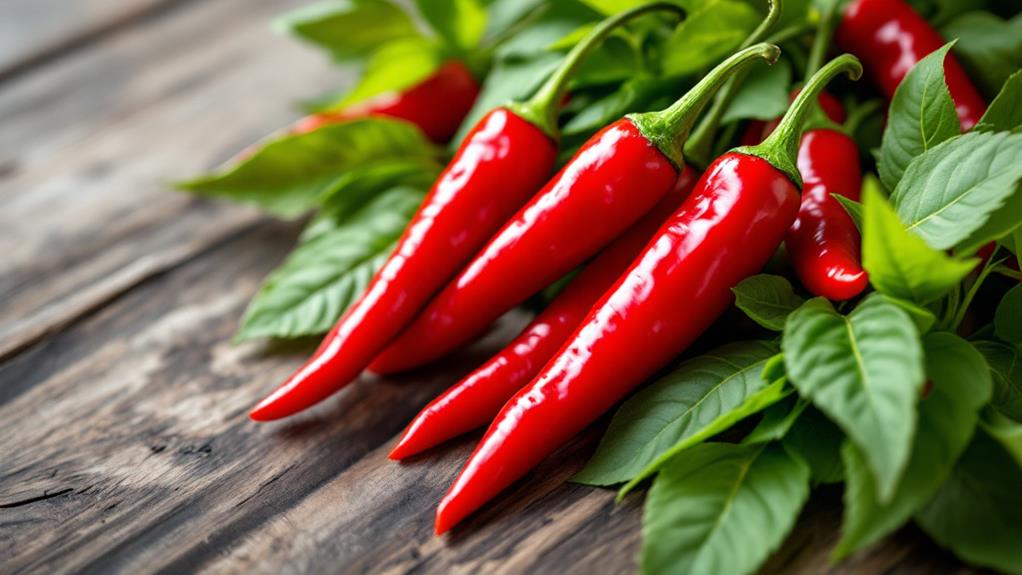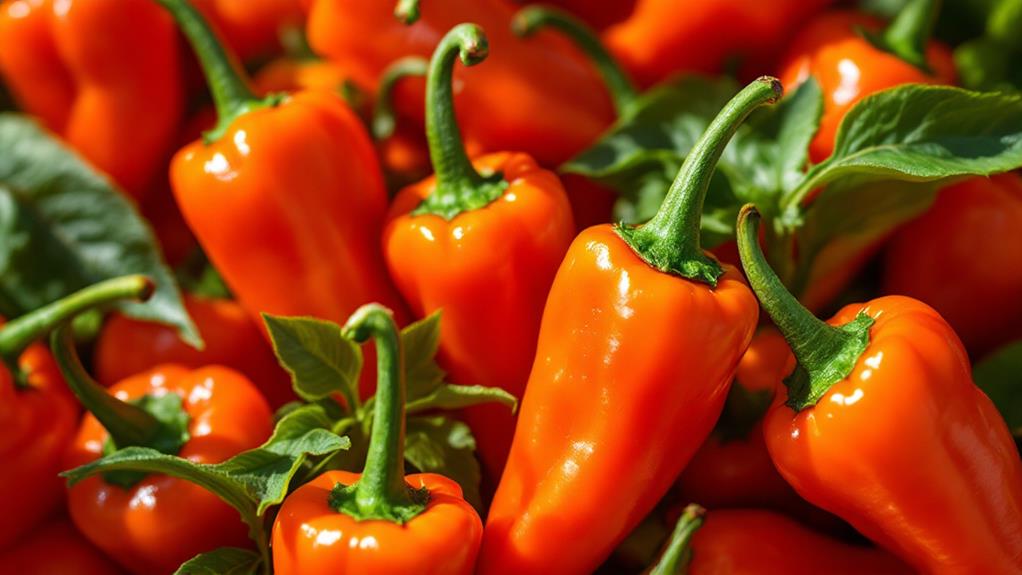The Pimento Pepper: Sweet and Subtle Heat
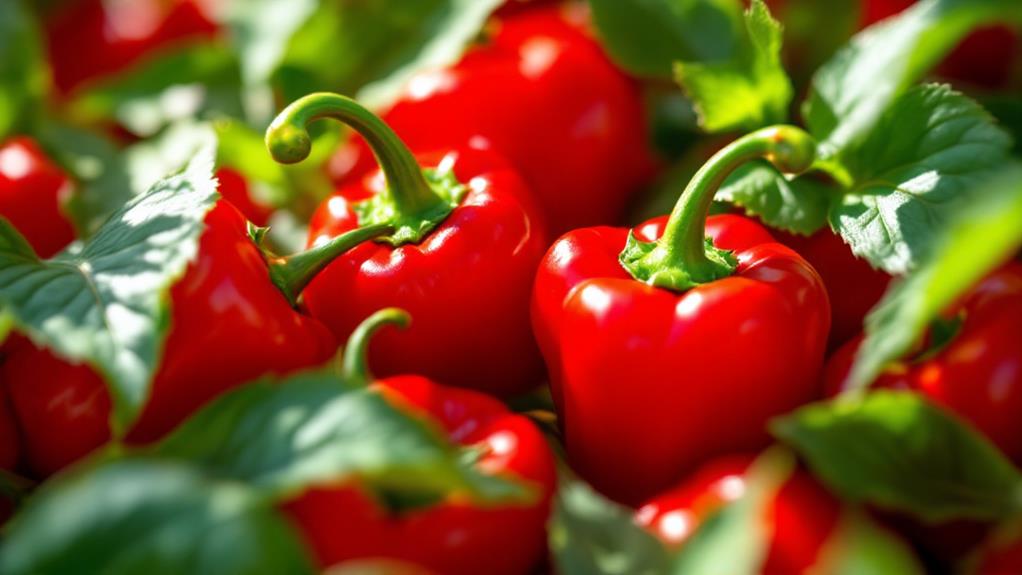
You'll find that pimento peppers, often called cherry peppers, perfectly balance sweetness with a mild, subtle heat. With a Scoville rating of just 100-500 units, they're gentle enough to improve dishes without overpowering them. These peppers thrive in warm climates and are especially popular in Mediterranean and Southern cuisines. They add a pop of color and flavor to stuffed olives, salads, and the beloved pimento cheese spread. Pimentos pair brilliantly with creamy textures and bold flavors, such as garlic and herbs. If you're enthusiastic to investigate further, there's much more to uncover about these delightful peppers.
Understanding the Pimento Pepper
Some might think pimento peppers are just the red pieces you find in olives, but they're so much more than that. These peppers, also called cherry peppers, are mild and sweet, making them a versatile ingredient in your kitchen. Rated between 100-500 heat units on the Scoville scale, pimentos offer a gentle kick without overwhelming your taste buds. Their sweet flavor pairs beautifully with stronger tastes, which is why you often find them balancing the boldness of olives.
As you investigate cooking with pimento peppers, you'll realize they grow best in warm climates, thriving in well-drained soil. Their striking red color and heart-like shape make them not only a flavorful enhancement but also a visually appealing one. Regardless of you're tossing them into a fresh salad or using them to create the beloved Southern staple, pimento cheese, these peppers add a delightful mild and sweet taste.
Understanding the unique characteristics of pimento peppers helps you appreciate their culinary value. They are more than just a garnish; they're a flavorful and integral component in many dishes, bringing a subtle sweetness and mild heat to your recipes.
Origins and Naming History
While exploring the culinary applications of pimento peppers, it's intriguing to uncover their origins and naming history. The term "pimento" comes from the Latin word "pigmentum," highlighting the pepper's lively color. Initially, both Spanish and Portuguese languages used "pimiento" and "pimento" to describe bell peppers. Over time, the definition evolved to include the sweet Spanish pepper that we recognize today. This shift illustrates the dynamic nature of language, where culinary practices influence how we classify and name food.
In the 19th century, the English language was still using "pimento" to refer to allspice, but eventually, this term transformed to signify sweet Spanish peppers. This change reflects a broader cultural adaptation, where the term gradually became synonymous with the pepper's distinct sweetness and mild heat. The pimento pepper is often affectionately called a "cherry pepper" due to its round shape and bright red color, further emphasizing its unique identity in the pepper family.
The evolution of the word "pimento" underscores the intertwined relationship between culture, language, and cuisine. As you explore the world of pimento peppers, you're not just tasting a sweet Spanish pepper; you're savoring a rich history of linguistic and culinary transformation.
Culinary Uses and Pairings

Pimento peppers bring a burst of color and sweetness to any dish, making them a cherished ingredient in the kitchen. Their sweet and mild flavor offers a delightful combination of taste and versatility. You can use these peppers fresh in salads, where their lively color and subtle sweetness improve the dish. The soft texture and mild heat also make them perfect for roasting, after which they can be peeled and incorporated into sandwiches, dips, or antipasto platters.
One of the most beloved culinary uses of pimento peppers is in pimento cheese. This popular Southern dish combines pimento peppers with cheese and spices, resulting in a creamy spread that's perfect for crackers or as a sandwich filling. Pimentos pair wonderfully with cream cheese, garlic, and herbs, making them an ideal supplement to appetizers and spreads. Their sweetness also complements the brininess of olives when used as stuffing, balancing robust flavors with their mild profile.
Don't forget the sweet pepper seeds; they add a unique texture to different dishes. With their adaptability and enticing flavor, pimento peppers transform ordinary recipes into extraordinary culinary creations. Investigate their potential and enjoy their subtle yet impactful presence in your kitchen.
Pimento in Popular Dishes
Why are pimento peppers a staple in so many beloved dishes? Their sweet flavor and mild heat make them incredibly versatile. In the Southern classic, pimento cheese, they blend seamlessly with cream cheese and mayonnaise, creating a spread that's perfect for sandwiches and crackers. You can't overlook their role in Mediterranean cuisine, where they shine in stuffed peppers. Here, the pimento pepper's sweetness balances savory fillings, enhancing each bite.
Ever tried pimento-stuffed olives? They're a cocktail hour favorite, thanks to the way the pepper's mild sweetness complements the olives' briny taste. Salad lovers, rejoice—adding pimento peppers provides a pop of color and flavor without overwhelming your dish. If you're looking for something more, roast them as a topping for pizzas or sandwiches. Their rich, sweet flavor pairs beautifully with meats and cheeses.
When considering growing conditions, keep in mind pimento peppers thrive in full sun. This guarantees they develop their signature sweetness and lively color. If you enjoy preservation, why not make pickled pimentos? This method extends their shelf life, allowing you to enjoy their unique taste year-round in a variety of dishes.
Growing and Harvesting Tips
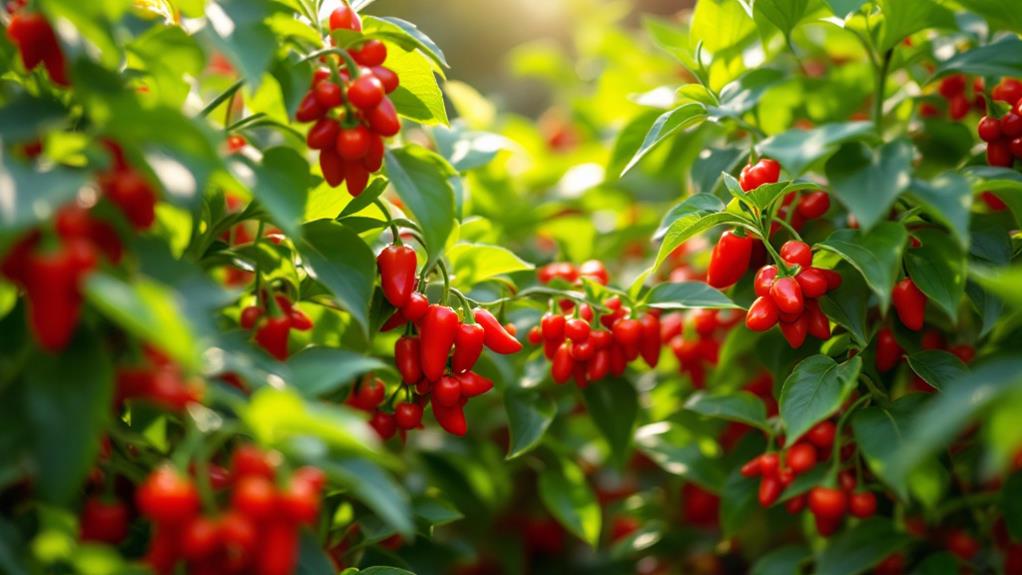
To cultivate thriving pimento peppers, focus on providing them with the right conditions. These peppers grow best in warm climates, thriving when temperatures range from 70°F to 85°F. Make certain to plant them in a spot that gets full sun exposure for at least 8-10 hours daily. When planting, set the seeds 0.25 inches deep, spacing them 18-24 inches apart to encourage proper growth and airflow.
Germination typically takes between 7-21 days, so patience is key. Keep the soil temperature steady between 75°F and 85°F to guarantee successful sprouting. Regular watering is essential, but be careful not to overdo it. Mulching can help retain soil moisture and regulate temperature, providing a more stable environment for your peppers.
When it comes to harvesting, timing is everything. Pimento peppers should be picked just before they reach peak ripeness—usually 85 to 90 days after planting—to achieve their maximum sweetness and flavor. By carefully monitoring the peppers' development and climate conditions, you can optimize their heat units and taste. With the right attention and care, your pimento peppers can be a flavorful enhancement to your garden.

